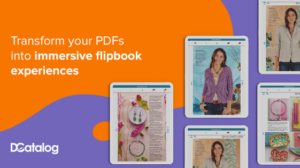Infographics are a visual way of delivering information. In the current digital era, we process about 102,000 words daily through mobile phones, social media, television. Adding pictures, videos, games, etc., to the equation, we view around 34gigs of information daily on average. This is a lot of information and human beings cannot possibly read this amount. Infographics deliver information more effectively because they elevate the cognitive process. According to a study, the human brain processes images 60,000 times faster than text. Moreover, around 90% of information transmitted to the brain is visual.
A picture is worth a thousand words, but an infographic is worth a million!
Therefore, having a website loaded with infographics can help you generate leads. However, due to the popularity of many other visual options like video animations, explainer videos, etc., the popularity of infographics has subsided a little.
In this article, you will learn how to create an infographic design capable of generating engagement, leads, and going viral. So stay tuned!
Conduct Market Research to Identify a Viral Topic
Success only comes to those who work for it!
Randomly designing infographics won’t work for your website unless and until you conduct research regarding the needs of your target audience.
If you want to create a viral infographic design, then you will need to provide information that is relevant to your potential prospects.
If you want to save time, then you can look for a trending topic and go with the flow. You can visit Twitter, Google Trends, Reddit, or BuzzFeed to search for a trending hot topic and create a related infographic.
Not only will your infographic go viral by generating traffic and shares, you will also get backlinks. If your work is of high quality, you might get featured on other websites as well.
Here are some points to keep in mind while brainstorming for a new infographic idea:
- It should solve a customer’s problem
- It should be entertaining and evoke curiosity about the website
- It should address and correct the common myths and misconceptions
- It should include facts and figures because numbers tell a story without bias
- Its claims should be backed by industry experts
- It should have images and graphics that hook viewers and make the content even more impactful
Achieving Pixel By Pixel Visual Excellence Must Be the Goal
Stunning visuals are the showstopper in any design-related genre. Design elements are not used just for the sake of decorating the canvas; design adds meaning to the overall layout of an infographic.
Infographic designs should direct the viewer till the very end, and the only way to hook the viewer for this long is by evoking emotional appeal. This is only possible if the design and the content are in sync.
Here a few guidelines you need to follow while designing infographics:
- The infographic design should have a beginning and an end. Think of it as a storyboard that narrates the entire story frame by frame.
- Make good use of white spacing because it will make the layout look cleaner and readable.
- Play with typography. You can use up to three fonts: one for your headline, the second for your body copy, and the third to add design flavor to the entire look.
- Add elements that have the capability of hooking the viewer. These can be anything from an illustrated face of a renowned celebrity to a historically significant site.
- Design it to a level that it becomes addictive.
- The design should have harmony; the entire structure should be in sync.
Infographics enriched With vibrant Colors Are a Class Apart
Color adds life to the overall design. It is one of the initial aspects of a design that a viewer notices. According to a study on the impact of color on marketing, people subconsciously judge products in the initial 90 seconds. About 62‐90% of the assessment is based on colors alone.
Color is crucial and also helps a designer to showcase stats and the relation between different stats. Moreover, color also affects the readability of the text.
Here are some suggestions:
- Use color to set the mood of the entire layout. Colors act as emotional cues and evoke certain feelings. For example, if you are designing an infographic for Valentine’s Day, then you should use different shades of red to give a romantic aura to the layout.
- You should have a basic knowledge of color and how it is perceived in different cultures. An infographic designer should also have a sound understanding of color psychology.
- Don’t overly focus on emotions and always incorporate brand colors.
- Color is the soul of a design, but it doesn’t mean you need to use every color you know of. Excessive color makes a design look cluttered and confusing.
- Color contrast is important; poor color selection may affect the readability of the design.
Go a Step Further and Create Animated Infographics
As we mentioned at the beginning, infographics have lost their charm because of many other alternatives. One such alternative is the animated video. Animations have become so popular among digital marketers that they are now considered an essential part of marketing strategy. More than just a delight, animations have now become a tool to capture attention.
However, animation is an expensive option and is only used for special marketing purposes. But guess what! You can now animate an infographic and incorporate motion into your infographic design. This will certainly make your infographics more appealing because of their uniqueness.
Not only are they more appealing, but they are also more useful in describing a process as compared to conventional infographics.
Design Social Media Friendly Infographics
Social media is the new horizon of the digital world. As of July 2020, there were 2.7 billion active users on Facebook alone.
Social media platforms are a gold mine for those who want their infographic designs to go viral. There is a greater chance of an infographic becoming viral on a social media page than on your website. People like, comment, and even share on these mediums.
A graphic designer should be well-aware of the post dimensions on every social media network. Here are some benefits of including infographics into your social media marketing strategies:
- They are appealing and impactful because they provide information in visuals.
- They can help create strong backlinks.
- They add a new flavor to your old content. Infographics are engaging because of the amount of information they provide to social media users.
- They are the best way to educate your audience about anything that can be useful for the brand in the future.
- They elevate brand equity and brand authority because of the quality information provided to the audience. People love to interact with brands that spread awareness through their social media accounts.
Keep Your Infographics Unique and Think Out Of the Box
The only difference between you and your competitor is creativity
In the digital world, there are countless websites that are marketing. They have the same tools, resources, and products as you do. The only way you can be different is through a creative approach. You have to make sure that your content is unique; otherwise, your efforts will be in vain.
Don’t be another brick in the wall; stand out and be different. Say no to generic templates and create your own graphic designs. Come up with new content, read relevant books, and search deeper for new information.
Don’t take inspiration; be one!
Create a Mood and Tell a Story
Since the beginning of time, humans have always been attracted to storytelling. One of the first communication methods was cave paintings; it was how prehistoric humans communicated their life experiences.
Thousands of years have passed, but as they say, old habits die hard. Today digital media is built around the concept of sharing stories, ideas, and personal experiences. Take a look at any social media platform and how it works. You will find it is all about bringing people with the same interests to a single platform. How is this done? Simply by providing users with a platform where they can fully express themselves.
Similarly, brands have stepped on the bandwagon. Most of the marketing campaigns we see today are based on narratives. If you can give the same feel to an infographic, it can do wonders. For example, creating a series of infographics about human beings and making the entire story around a person. By doing so, you will create an infographic design relatable to the masses.
Wrapping It Up
Unfortunately, no application can create eye-popping infographics with just a click. You will have to put a lot of effort into it. And the chances are that even after using every creative tool in your box, you might still fail. However, by applying all the techniques mentioned above, you can create an infographic design that has the potential of going viral.
The thing about the digital world is that it is unpredictable. Your first post could go viral, or even after posting multiple times, you may still not generate traffic. But strategies based on hard work and an action plan are bound to succeed.
Just stick to the basics mentioned above and things will work out eventually.





